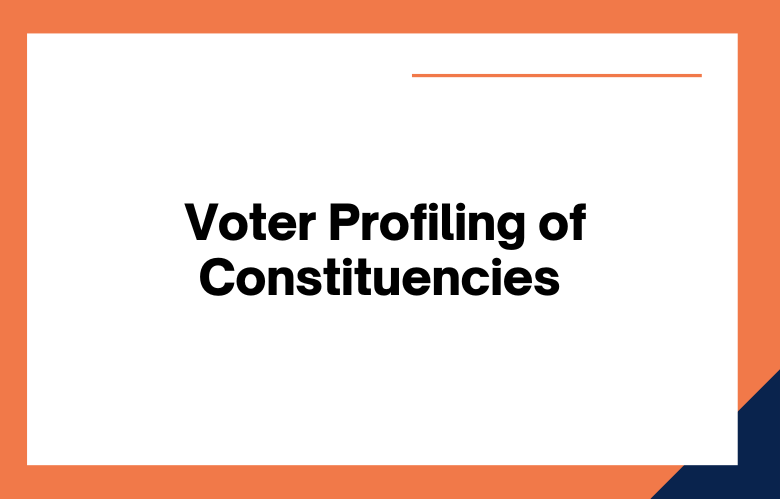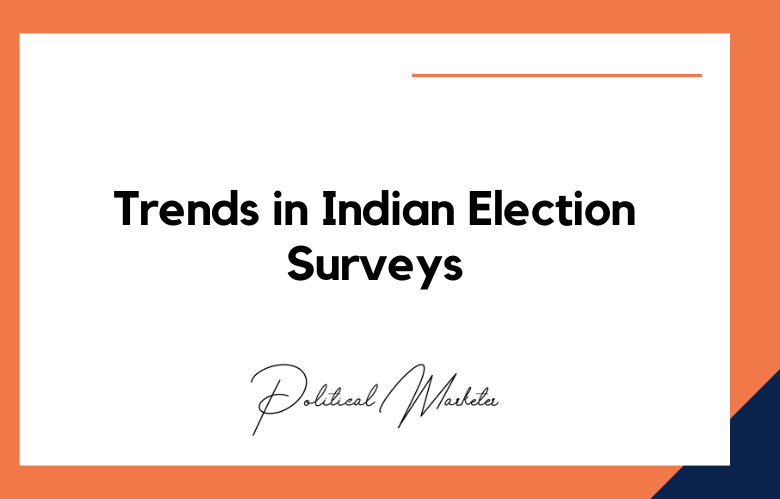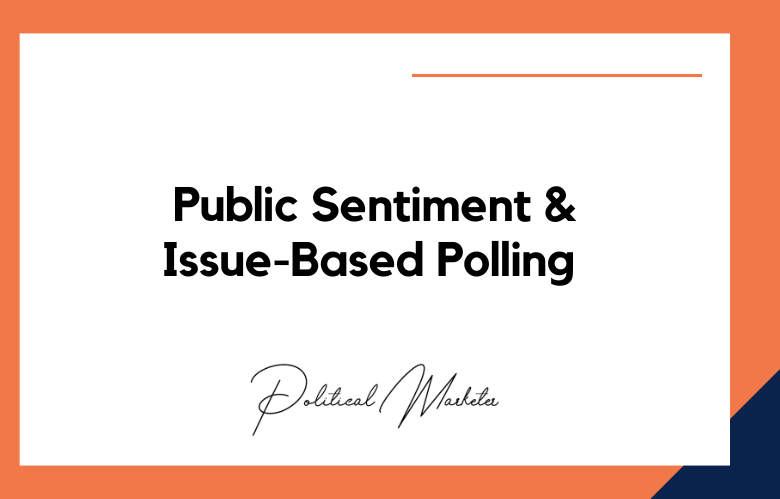Each election cycle, political campaigns across the country work to understand their constituents and craft an effective campaign strategy.
One tool that is used to gain a better understanding of the population is voter profiling.
Voter profiling is the process of studying demographics, such as age, gender, race, occupation, and voting history, to develop a better understanding of a particular constituency.
By utilizing this tool, campaigns can target, more specifically, those most likely to vote in their favor. Let’s examine voter profiling and why it is essential for political campaigns.
What is Voter Profiling?
Voter profiling analyzes data about potential voters to better understand their interests, values, attitudes and needs.
This data can come from public records, surveys, focus groups, polls, or other sources.
Once the data has been analyzed and organized into functional categories (e.g., age group or gender), campaign strategists can use this information to craft compelling messages that resonate with specific voters.
What does Voter Profiling look like?
Voter profiling typically starts with gathering public records such as census and voter registration information.
This provides campaigns with socio-economic demographics like age, gender, race, and income level.
It also gives them insight into voting histories, such as past primary or general election turnout or party registration status.
Using this data allows campaigns to understand the types of voters likely to support them in an upcoming election.
The goal is for campaigns to use these insights to create targeted messages that resonate with different constituencies within the district or state they are running in.
Why is Voter Profiling Important?
Voter profiling helps political campaigns decide where to allocate resources when it comes time to hit the campaign trail.
This analysis helps campaign managers better determine which areas to target during their outreach efforts. It also provides valuable insights into voter sentiments on critical issues within specific districts or states.
Utilizing voter profiles can help candidates craft tailored messages designed around each demographic group they are targeting —
They ensure they never miss an opportunity to reach potential voters who may go unnoticed if not approached through more traditional campaigning methods.
How can Voter Profiling help Politicians win Elections?
In politics, it’s all about winning—and voter profiling can give politicians the edge they need to come out on top.
Voter profiling is a sophisticated tool used by political campaigns that helps them target specific voters in their constituencies with messages tailored to each voter’s interests and preferences.
Let’s examine how voter profiling works and why it can be so effective.
Unpacking Voter Profiling to Win Elections?
Political campaigning is a complicated art made up of many different elements. One crucial element that all political campaigns should be aware of is voter profiling.
This process involves gathering data on constituents and using it to create targeted messaging that speaks directly to potential voters’ needs and concerns.
Let’s examine voter profiling and how it can help political campaigns win elections.
How do Political Campaigns Utilize Voter Profiles?
Once campaigns have created detailed voter profiles for each target audience segment, they can utilize those profiles in myriad ways.
For example, they can use the profiles to inform the content of their ads so that each message is tailored specifically to its intended audience; they can also use them when deciding which channels or platforms to use when advertising (e.g.,
Facebook vs. Twitter). They can use the profiles as part of their digital marketing strategies by creating targeted email lists or engaging potential voters through social media channels like Instagram or Snapchat.
Understanding Voter Profiles for Political Campaigns?
Knowing your target audience is essential for any successful marketing campaign.
This is especially true for political campaigns where understanding voter profiles can be the difference between winning or losing an election.
We’ll discuss voter profiling and how it can help you create effective political campaigns.
What are the benefits of Voter Profiling?
Voter profiling is a potent tool for political campaigns. It helps them narrow down their target audiences, allowing them to reach the most likely voters with precision and efficiency.
Voter profiles are typically created by combining demographic information such as age, gender, income level, and location with psychographic data such as political affiliations, religious beliefs, social media activity, and more.
This allows campaigns to create highly accurate models that can be used to hone in on the exact types of voters they want to target.
More Accurate Representation
One of the primary benefits of voter profiling is that it can help to ensure that a political campaign is more accurately representative of the electorate.
By targeting specific groups of voters with targeted messages, a campaign can more effectively reach voters most likely to support the candidate or issue.
Increased Efficiency
Another benefit of voter profiling is that it can help increase a political campaign’s efficiency.
By targeting specific groups of voters, a campaign can save money and time by not wasting resources on advertising and communicating with voters who are unlikely to support the candidate or issue.
Greater Engagement
Voter profiling can also lead to greater engagement with the political process.
When people feel their vote matters and their voice is heard, they are more likely to participate in the political process.
This increased participation can lead to a more representative and effective government.
More Informed Voters
Voter profiling can also help to create more informed voters. When people are targeted with relevant information, they are more likely to pay attention and learn about the issues.
This increased knowledge can lead to more informed and engaged citizens, which benefits democracy.
Better Candidates
Voter profiling can also lead to better candidates running for office.
When candidates know that they need to appeal to specific groups of voters to win an election, they are more likely to focus on issues that are important to those groups.
This improved focus can lead to better policies and decision-making by elected officials.
Greater Accountability
Voter profiling can also lead to greater accountability by elected officials.
When officials know that they will be held accountable for their actions by specific groups of voters, they are more likely to act in those groups’ best interests.
This increased accountability can lead to improved governance and better outcomes for all citizens.
Increased Transparency
Voter profiling can also lead to increased government transparency.
When officials know that they will be held accountable for their actions by specific groups of voters, they are more likely than ever to ensure that those actions are made public and easily accessible to all citizens.
Unlocking the Secrets of Voter Profiling: Tips & Strategies for Political Campaigns?
Voter profiling is a technique that enables political campaigns to understand the characteristics, preferences, and inclinations of eligible voters, allowing them to create more targeted and effective campaign strategies.
In recent years, voter profiling has become increasingly important, and political analysts predict that it will play an even more significant role in future elections.
Unlocking the secrets of voter profiling can be daunting for political campaigns, but with the right tips and strategies, it can be accomplished effectively.
The first step in voter profiling is to collect data on the voters’ demographic information, including age, gender, education level, and occupation.
Campaigns can use this information to segment voters based on their characteristics and create personalized messages that resonate with them.
Another crucial aspect of voter profiling is collecting data on voters’ interests, beliefs, and political opinions.
This information can be gathered through surveys, social media analysis, or public records searches. Campaigns can use this data to understand voters’ views and craft messaging to appeal to their interests and values.
How to Harness the Power of Voter Profiling to Nail Your Next Political Campaign?
As the world becomes increasingly digital, political campaigns have adapted to the changing times by utilizing data-driven methods to target potential voters.
Voter profiling is a powerful tool to help you identify your target audience, understand their needs, and tailor your campaign messages to resonate with them.
The first step in harnessing the power of voter profiling is to gather data about your target audience. This can be done in various ways, such as conducting surveys, analyzing social media profiles and interactions, and collecting public records.
The data you collect should be relevant to your campaign and provide insight into the key issues and priorities that matter most to your target voters.
The Ultimate Guide to Voter Profiling: A Comprehensive Tutorial For Political Campaigns?
The importance of effective voter profiling cannot be overstated when it comes to political campaigns.
With a deep understanding of the electorate, campaigns can tailor their messaging and outreach strategies to resonate with specific groups of voters, ultimately increasing their chances of success at the ballot box.
This comprehensive tutorial will cover everything you need to know about voter profiling, from the basics to the most advanced techniques.
We’ll start by defining voter profiling and why it matters in today’s political landscape.
We’ll then dive into the various data sources and tools campaigns use to build their voter profiles, including voter registration records, demographic data, and digital engagement metrics.
Maximizing Impact with Voter Profiling: Strategies For Winning Elections?
Maximizing the impact of voter profiling is a crucial strategy for winning elections. It involves identifying the most likely voters to support a particular candidate and tailoring campaign messages to their interests and motivations.
This approach has been proven to be highly effective in increasing voter turnout and persuading undecided voters to vote for a particular candidate.
One of the most critical aspects of voter profiling is data analytics. Through data analysis, political parties and campaign teams can gather insights into voters’ behavioral patterns, demographics, and preferences.
This data can then be used to develop targeted messages, tailor campaign ads, and craft more effective election strategies.
Analyzing Voters With Data: The Ins and Outs of Voter Profiling?
Analyzing voters with data is a crucial tool for any political campaign. It allows a better understanding of the electorate and enables movements to tailor their messages to different voter groups.
Voter profiling involves collecting and analyzing data on individuals’ voting histories, demographic information, and consumer behavior to create a detailed profile of each voter.
This information helps campaigns identify which voter groups to target with specific messaging and which issues are most important to these groups.
One of the critical benefits of voter profiling is the ability to micro-target specific voter groups with tailored messages.
By analyzing data on individual voters, campaigns can identify which issues are most important to different groups and create messaging that resonates with those priorities.
This can be particularly effective in swing states, where small shifts in voter preferences can significantly affect the outcome of an election.
Conclusion
Voter profiling has become essential to many successful political campaigns because it allows them to identify key constituencies that could make or break a campaign’s chances of winning an election.
Utilizing data-driven techniques like voter profiling ensures no one demographic group gets overlooked by campaigns during the planning phase and throughout the election cycle —
Ensuring each constituency has a voice in deciding who represents them in national government offices.
Ultimately, voter profiles allow political campaigners greater access to how specific segments of voters think so they can tailor the best possible message that resonates with each group—ultimately giving candidates their best chance at success come Election Day!
Call: +91 9848321284
Email: [email protected]











